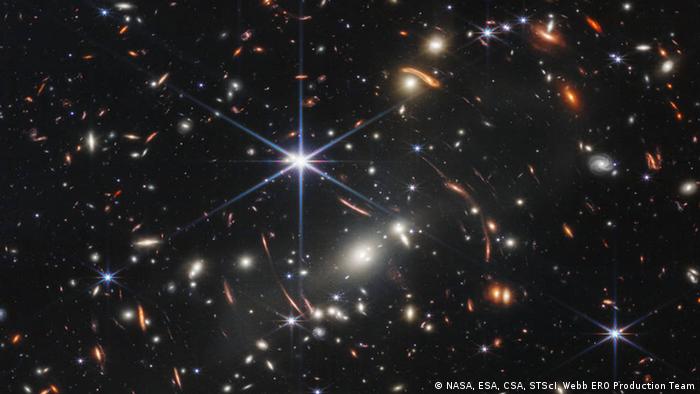
The first full-color image from NASA's James Webb Space Telescope was released on Monday, providing a first glimpse of what the early Universe looked like.
US President Joe Biden presented the image at a live-streamed preview event at the White House.
Further full-color images are set to be revealed at 16:30 Central European Time. The releases can be viewed via a livestream on the European Space Agency's (ESA) webpage, and by following DW's coverage of the release here.
The pictures are the deepest images of the Universe ever made and represent the first wave of scientific images gathered since the telescope began operations.
Among the photos will be the Carina Nebula and the Southern Ring Nebula, two vast interstellar clouds that form stars, and two galaxy clusters called SMACS 0723 and Stephan’s Quintet.
Webb will also show atmospheric analysis of a giant exoplanet called WASP-96 b (spectrum) — a gas planet that orbits a star outside our solar system.
"From the deepest images of our Universe ever made, to stellar life cycles, interacting galaxies and insights into exoplanets, Webb is set to wow us across a wide range of topics," The ESA stated in a press release last week.
How does the telescope work?
The James Webb Space Telescope is the next great space science observatory following Hubble, designed to answer outstanding questions about the Universe and make breakthrough discoveries in all fields of astronomy.
The joint project between the American space agency NASA, and the European and Canadian space agencies (ESA, CSA)launched in December 2021.
The telescope uses infrared thermal camerasto capture parts of the electromagnetic spectrum invisible to the naked eye. Infrared allows astronomers to see through dust clouds that would otherwise block out the view.